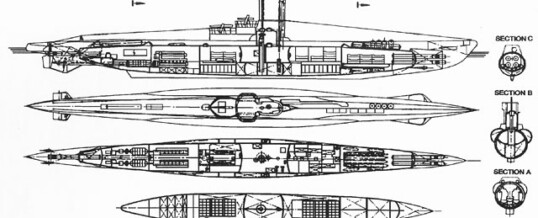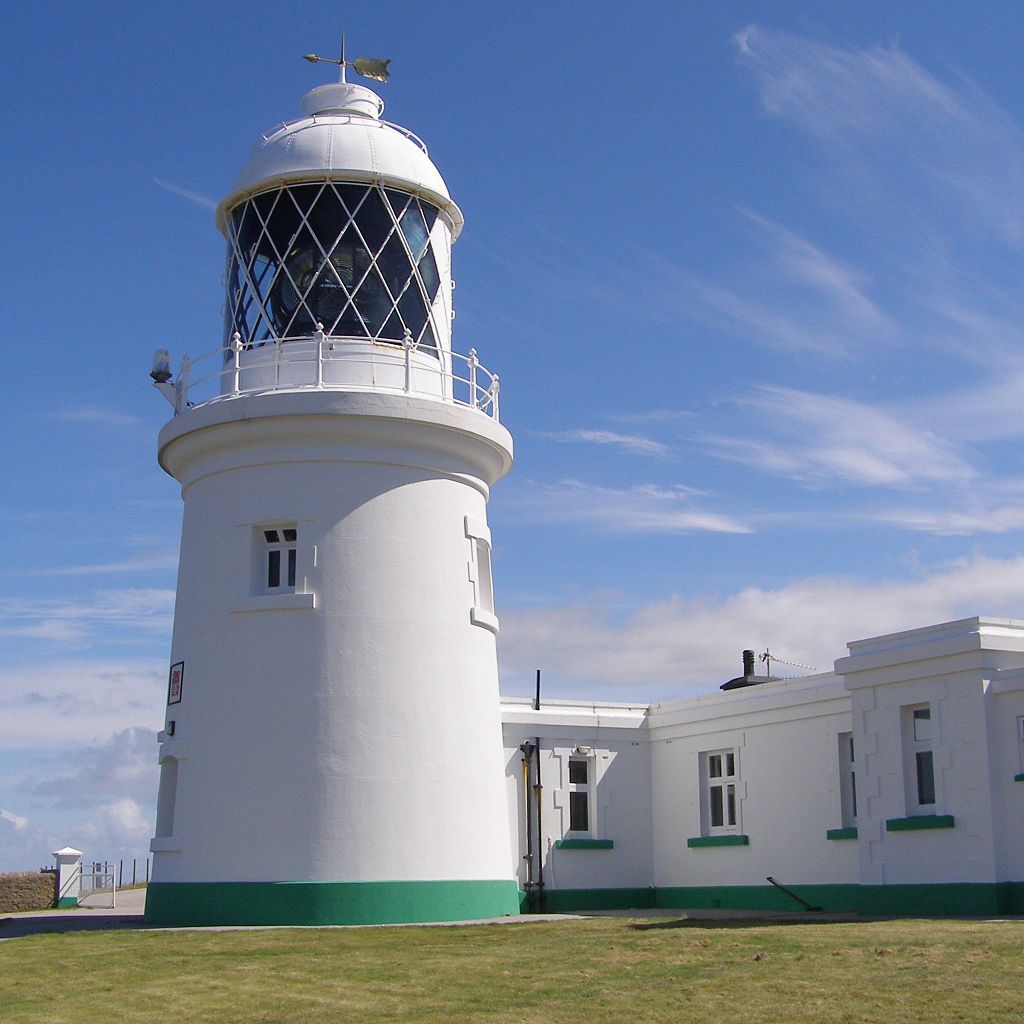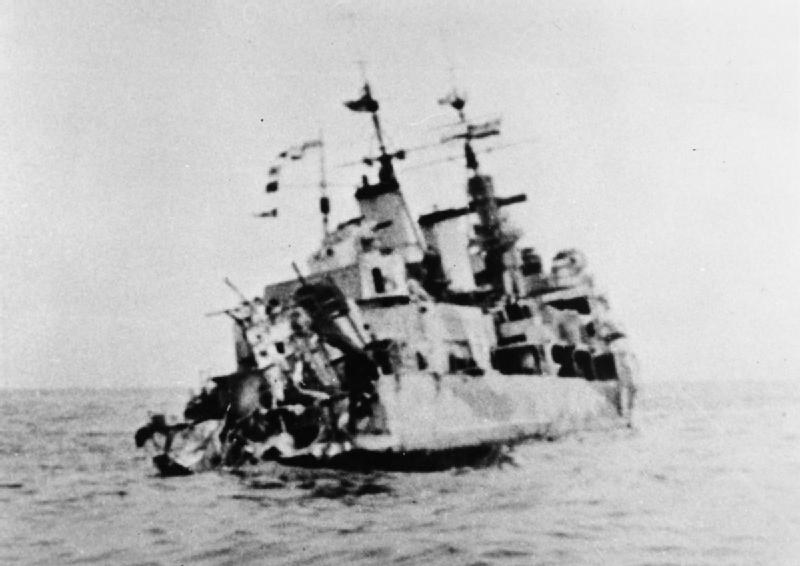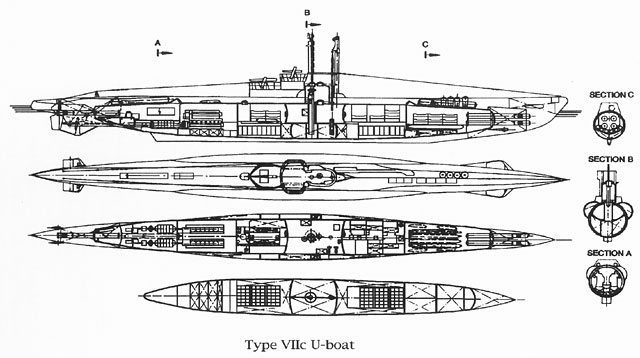
Today’s shipwrecks include a Canadian steamer that sank in World War One with religious articles, but whether they were the bones of saints, vestments, or church treasures in gold or silver is not known. The same ship likely carried shipments of gold and silver bullion. The wreck of the HMS Edinburgh, which was sunk in 1942 and was largely salvaged over 35 years ago, still has five large gold bars on her worth a total of almost $875,000. If you are reading this in a post, go to http://shipwrecks.com/shipwrecks-of-may-2/ to learn more about the Edinburgh and some of the many other shipwrecks that have occurred on this day over the years.
Today’s Shipwrecks™
May 2
compiled and edited by Dr. E. Lee Spence
1774: The vessel Polly, Captain Waid, bound from Honduras to New York, was lost on the northeast end of Glover’s Reef, Belize on May 2 and 3, 1774. Her crew and part of the cargo were saved. About the same time, the vessel Argyle, Captain Fisher, was lost on the Main Reef, about five leagues from the south west end of Glovers Reef. The Argyle’s people were saved and it was hoped that part of her cargo would be too, but the ship was entirely lost.
1781: The ship Retrieve, which lay at Five-Fathom-Hole, below Savannah, Georgia, was capsized in a storm on May 2, 1781, and nine men and two boys were drowned.
1818: The vessel Amelia, Captain Williams from Jamaica and Trinidad de Cuba to the Clyde, ran on shore on the Jardines, near Isle of Pines, Cuba, on May 2, 1818.
1823: The vessel Vriendschap, Captain de Jong, bound from Surinam to Amsterdam, was driven on the rocks the west end of Bermuda, on May 2, 1823. (Note by ELS: Today, Surinam produces a lot of gold. In 1823, it was still a Dutch colony.)
1862: About four o’clock on the morning of May 2, 1862, the U.S. Bark Restless chased a schooner ashore “towards the southern end” of Bull’s Island, South Carolina. The schooner was immediately set on fire and abandoned by her crew. The Federals, on boarding, extinguished the fire and managed to get her off successfully. The schooner was described as “a good vessel” and carried a cargo of “salt and 100 hundred boxes.” From a logbook and “English colors” found aboard the schooner, she was believed to be the Flash, of and from Nassau, sailing under an English register. The Flash’s crew was captured by the U.S. ship Onward. The Flash was sent to the port of New York for adjudication as a prize of war.
1869: The half-brig J. McIntyre, Captain Haskell, with a cargo of sugar and molasses “was totally wrecked near Dollar Harbour on Brown Cay Bank,” Bimini, Bahamas, on May 2, 1869. She was built in 1856 by Carlton, Norwood & Company at Rockport, Maine. She was 108 feet in length, 29 feet in breadth, 10 feet 10 inches in depth of hold, drew 13 feet of water, and was 289 tons.
1918: The German submarine UB-31 was depth-charged and sunk in the Strait of Dover on May 2, 1918 by the British ASW drifters Lord Leitrim and Ocean Roamer. She sank 26 ships in 25 patrols.
The submarine was a Type UB II and was 302 tons, 121 feet in length and 14 feet 6 inches in breadth. She had two propellers powered by two Diesels engines and two electric motors. UB-31 was armed with one 88 mm (3.5 inch) deck gun and two 50 cm (19.7 inch) torpedo tubes in her bow, and carried six torpedoes. This wreck has been located and positively identified by the markings on her propellers.
1918: The Canadian Pacific Steamship Company vessel Medora, bound from Liverpool for Montreal, was torpedoed by the German submarine U-86 on May 2, 1918. Shortly after the crew abandoned ship in their lifeboats, the submarine surfaced and demanded the surrender of the steamer’s captain, chief wireless officer and chief gunner. The crew at first refused to give them up. The submarine’s commander, Captain-Lieutenant Goetze, in perfect English, responded “Stop this nonsense right this instant, if they do not give themselves up immediately, I will sink all of the lifeboats.” After that the captain and wireless operator stood up. The sub commander again asked for the chief gunner, but the second gunner surrendered himself instead”as his superior was a married man and he was single with no domestic ties.” The German officer’s final words to the ship’s crew were “Give my compliments to Lord George” and then fired twenty exploding shells from a six-inch deck gun into the Medora. An hour later, seeing that the steamer was still floating, the sub returned and fired five more shells, and the ship finally sank, slowly going down stern first. Her location was described as 11 miles west southwest of Cape Mull, Galloway, Scotland. The Medora’s cargo included “religious articles” apparently being shipment out of the war zone for safety. It is quite likely that she also carried shipments of gold and silver bullion.
The Medora was built by Russell & Company Ltd., in Greenock, in 1912 as the Frankmount. She was 5,135 tons, 410 feet in length, 52 feet 1 inch in breadth, and 28 feet in depth of hull.
1918: Coincidentally, on the same day the Medora was sunk, another ship carrying religious articles was also lost. This time it was the British steamer Thorsa, Captain Andrew Robertson, which was sunk by the German submarine UB-103, at midnight, while bound from Le Harve, France, for Liverpool. She carried 500 tons of cargo, which included four cases of “Church vestments.” But whether they were exactly that or whether church treasures might have been concealed in them is not known. Whatever it was, everything, except the crew, went down with the ship. She sank three miles north northwest of Pendeen Lighthouse, which is just over a mile north of Pendeen in west Cornwall, United Kingdom.
The Thorsa was built by Barclay, Curle & Co. Ltd., at Whiteinch, Glasgow, Scotland in 1884. She was 1,319 tons, 240 feet 3 inches in length, 32 feet 2 inches in breath, and 15 feet in depth of hold.
1818: The British steamer Flawyl, bound from Malta to Bizerta, Tunisia with a cargo of unspecified metals, was sunk by the German submarine UB-52, commanded by Otto Launburg, on May 2, 1918, 30 miles east southeast of the Island of Pantelleria in the Strait of Sicily. Her location was also given as latitude 36°41′ north, longitude 12°42′ east. One life was lost. (Note by ELS: During World War One, Tunisia was sometimes used as a transshipping point for precious metals that banks and countries were trying to get out of the war zone.)
The Flawyl, 3,592 tons, was built by Sunderland Shipbuilding Company, Ltd., Sunderland in 1906.
1942: The British Royal Navy Town-class cruiser HMS Edinburgh, which was part of Allied Convoy QP 11, was torpedoed and damaged in the Barents Sea north of Murmansk, Soviet Union (73°09’N 32°45’E) by German submarine U-456 on April 30, 1942. She was taken in tow, but was torpedoed and sunk in the Kola Inlet on May 2, 1942, by the German destroyer Z24. Fifty-eight of HMS Edinburgh’s crew of 750 were lost. Her survivors were rescued by HMS Gossamer and HMS Harrier.
When she sank, Edinburgh was carrying 4.5-long-tons (4,570 kg) of gold bullion back to the United Kingdom. The consignment, which had a value of about £1.5 million sterling in 1942 (adjusted for inflation to 2017 pounds, £63,047,983 sterling), was a partial payment by the USSR for the supplies of war material and military equipment from the Western Allies. In total the ship had 465 gold ingots in 93 wooden boxes stored in the bomb-room just aft of where the first torpedo – fired from U-456 – struck.
Nine years after World War II, the British government offered the salvage rights on Edinburgh to the British salvage company, Risdon Beazley Ltd., in 1954. However the project was put on hold due to strained political relations with the Soviet Union. In 1957, the wreck was designated as a war grave, which further complicated any recovery attempts because of the limitations in salvage techniques of the era.
In the late 1970s, the British government became increasingly anxious to recover the gold; not only because of its value but also because there was a growing concern that the wreck might be looted by unscrupulous salvagers or by the Soviet Union.
In the early 1980s, seasoned diver Keith Jessop’s company Jessop Marine, with the full guidance and support of Wharton Williams Ltd ~ a leading global diving company, and OSA ~ a specialist shipping company, won a contract to attempt a recovery. Cutting into the wreck by divers was deemed more appropriate for a war grave than the traditional ‘smash and grab’ explosives-oriented methods. The consortium of specialist companies for the project was then formed: Wharton Williams as managers, OSA and Decca. This group was contracted to Jessop Marine to attempt a recovery of the gold from the bomb room of the Edinburgh.
In April 1981, the OSA survey ship Dammtor, with Decca surveyors embarked under the direction of former Royal Naval Survey officer John Clarke, began searching for the wreck in the Barents Sea. The area was approximately 150 miles (240 km) north of the coast of the USSR and Norway. After less than 48 hours, Decca discovered the wreck about 250 miles NNE of the Soviet coast at the Kola Inlet. The depth was 800 feet. Deploying a Scorpio ROV, Dammtor took detailed film of the wreck, which allowed Wharton Williams and OSA to evaluate a recovery project. The survival of her sister ship Belfast lying in the Thames, permitted management and later the diving team to inspect and absorb the layout of the compartments surrounding the bomb room and, not least, the enormity of the challenge to cut into the ship 800 feet down in a hostile and remote location.
Later that year, on 30 August, the OSA dive-support vessel Stephaniturm steamed to the site from Peterhead, and the diving operation began in earnest under the leadership of former RN Clearance Diving Officer, Mike Stewart. On September 15, 1981, diver John Rossier found the first bar of gold. By October 7, when bad weather finally forced the cessation of the diving operation, 431 of 465 ingots had been recovered. At the time the haul was worth in excess of £40,000,000 sterling and set a World Record in deep diving.
A further 29 gold bars were brought up in 1986 by the Consortium, bringing the total to 460, leaving five gold bars still unaccounted for with a total value of about £677,935 sterling (or almost $875,000).
1943: The German submarine U-332 was bombed and sunk by British aircraft off Spain in latitude 44°48′ north, longitude 08°58′ west on May 2, 1943.
U-332 was a type VIIC submarine. Tye VIICs were the workhorse of the German U-boat force, with 568 commissioned from 1940 to 1945. They were armed with five 533-mm (21-inch) torpedo tubes (mounted four in the bow, one in the stern) and carried 14 torpedoes or 26 TMA mines. For surface fighting they carried one C35 88-mm gun and anti-aircraft guns.
• • •
NOTE: This is by no means meant to be a complete list of the vessels lost on May 2, as there have been thousands of ships lost for every day of the year. All of the above entries have been edited (shortened) and come from various editions of Spence’s List™. The original lists usually give additional data and sources. Those lists are being updated and are or will be made available for a fee elsewhere on this site.
© 2013, 2017 by Dr. E. Lee Spence for composition, content and compilation.


